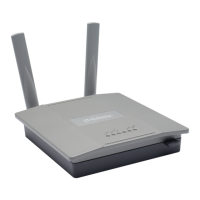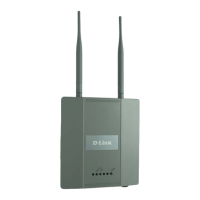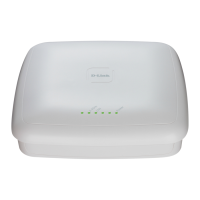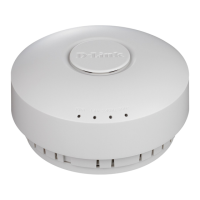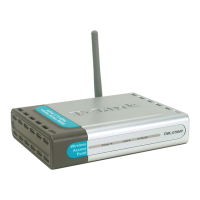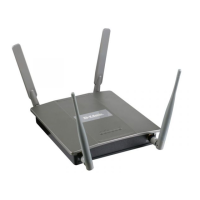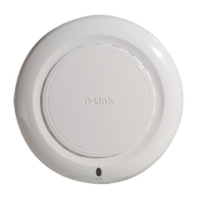Unied Access Point Administrator’s Guide
Page 60
January 2015
Section 4 - Managing the Access Point
If you use RADIUS MAC authentication for MAC-based access control, you must congure a station list on the
RADIUS server. The station list contains client MAC address entries, and the format for the list is described in the
following table.
RADIUS Server Attribute Description Value
User-Name (1) MAC address of the client station. Valid Ethernet MAC Address.
User-Password (2) A xed global password used to
lookup a client MAC entry.
NOPASSWORD
Table 31 - RADIUS Server Attributes for MAC Authentication
Conguring Load Balancing
You can set network utilization thresholds on the UAP to maintain the speed and performance of the wireless network
as clients associate and disassociate with the AP. The load balancing settings apply to all supported radios.
To congure load balancing and set limits and behavior to be triggered by a specied utilization rate of the access
point, click the Load Balancing tab and update the elds shown in the following gure.
Figure 29 - Modify Load Balancing Settings
Field Description
Load Balancing Enable or disable load balancing:
To enable load balancing on this AP, click Enable.
To disable load balancing on this AP, click Disable.
Utilization for No
New Associations
Provide the percentage of network bandwidth utilization allowed on the radio before the AP
stops accepting new client associations.
The default is 0, which means that all new associations will be allowed regardless of the
utilization rate.
Table 32 - Load Balancing
Note: After you congure the load balancing settings, you must click Apply to apply the changes
and to save the settings. Changing some settings might cause the AP to stop and restart system
processes. If this happens, wireless clients will temporarily lose connectivity. We recommend that
you change AP settings when WLAN trafc is low.
Managed Access Point Overview
The UAP can operate in two modes: Standalone Mode or Managed Mode. In Standalone Mode, the UAP acts as
an individual AP in the network, and you manage it by using the Administrator Web User Interface (UI), CLI, or SNMP.
In Managed Mode, the UAP is part of the D-Link Unied Wired and Wireless System, and you manage it by using
the D-Link Unied Wireless Switch. If an AP is in Managed Mode, the Administrator Web UI, Telnet, SSH, and SNMP
services are disabled.
On the UAP, you can congure the IP addresses of up to four D-Link Unied Wireless Switches that can manage it. In
order to manage the AP, the switch and AP must discover each other. There are multiple ways for a switch to discover
an AP. Adding the IP address of the switch to the AP while it is in Standalone Mode is one way to enable switch-to-AP
discovery.

